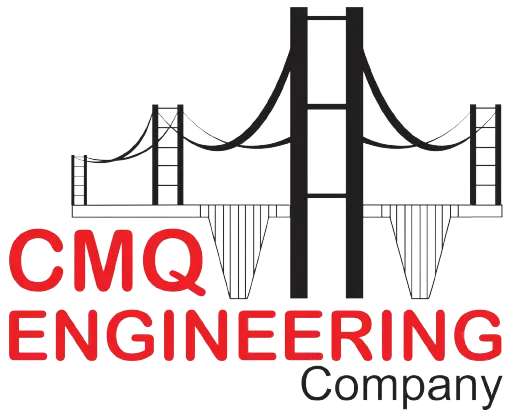Estimating a commercial painting project requires a detailed approach to ensure accuracy and fairness for both the client and the service provider. To provide a reliable estimate, it’s crucial to consider the size and condition of the building or space, the type of paint job required, and any additional services that may be necessary. Below is a step-by-step process for compiling a comprehensive estimate for a commercial painting project by CMQ engineering experts.
1. Gather Project Details
Assess the following information that will have a direct impact on costs:
- Building Size and Layout: Measure the square footage of the area to be painted. Consider that complex layouts may require more time and labor.
- Condition of the Space: Inspect the existing conditions. Walls that need extensive preparation due to damage or the presence of old paint can increase project time and costs.
- Type of Painting Required: Determine whether the painting is for interior, exterior, or both. Exterior painting might incur extra costs due to weatherproofing.
- Specific Areas for Painting: Take note of specific components such as walls, ceilings, trim, doors, and floors. Details like high ceilings or intricate trim work may add to the estimate.
- Additional Services: Identify if pressure washing or surface prep is needed. This will add labor hours and material costs.
- Project Timeline: A shorter timeline can increase costs, especially if additional resources or overtime hours are required to meet deadlines.
2. Measure Areas for Painting
Calculate the amount of paintable area in square footage:
- Measure the length and width of each wall and multiply by the area in square feet.
- For ceilings and floors, follow the same length x width formula.
- Subtract the area of windows, doors, and other non-paintable sections.
3. Consider Cost Factors
Evaluate the elements that will influence the total cost:
Surface Area
Larger areas require more paint and labor. So, the first thing professionals need to consider is calculating the area required for painting in commercial painting estimates usually there is work on the mass level.
Paint Type and Quality
Higher-end paints with special features (such as eco-friendliness or extra durability) will cost more. So, you must determine what your client is looking for before calculating the quantity.
Labor Costs
The job’s complexity and regional labor rates will contribute to the final cost. As an estimator, you should know the labor costs in the area where you operate.
Additional Services
Prep work like cleaning, patching, and priming can significantly affect the total. Further transportation of materials and other factors can also be associated with additional costs.
Include notes on other potential costs like:
- Travel or transportation fees.
- Accommodation for large projects that require multiple days.
- Fees for additional work discovered during the project.
4. Estimate Paint Quantity
Use the measured square footage to calculate the amount of paint needed. Typically, one gallon covers approximately 400 square feet. Add a buffer for touch-ups and a second coat if necessary.
In commercial projects we usually take quantities in bulk, saving up a lot of money and exact calculation matters to avoid material wastage and overspending.
5. Detail a Line Item Estimate
Provide a breakdown of costs, including:
- Painting surfaces with their respective square footage and cost.
- Additional services with individual pricing.
- Supplies needed (paint, primer, tape, drop cloths, etc.)
- Any special equipment required (scaffolding, lifts, etc.)
- Labor is calculated as a per-hour rate or by sq ft.
- Total estimated hours to complete the project.
7. Present the Estimate
Compile all of the information into a well-organized and professional estimate. Include terms and conditions and any guarantees or warranties provided with the service. Communicate the potential for variation in the final cost based on discoveries once the job has begun (e.g., structural repairs, mold treatment).
Our Sample For Painting Estimate
Project Description: 10,000 sq ft office space – interior wall painting. High ceilings, standard layout. Minimal surface damage.
- Labor: $30/hr – Estimated 160 hours
- Paint: $35/gall – Required 25 gallons
- Supplies: Tape, drop cloths, brushes, rollers – $200
- Prep Work: Patching, sanding – $400
- Additional Services: Pressure washing – $500
- Total Estimate: (add up all costs)
Include any taxes, discounts, or promotions affecting the final quote. Always advise the client that the estimate is subject to change based on any adjustments made to the scope of work or unforeseen issues that may arise during the project.
By carefully crafting a detailed estimate, you assure clients of your professionalism and increase transparency, leading to a more trustworthy relationship and successful project completion.
If you want to hire our professionals for estimation work, email us your projects at [email protected]. We can help you save loads of time and money on your upcoming project.










